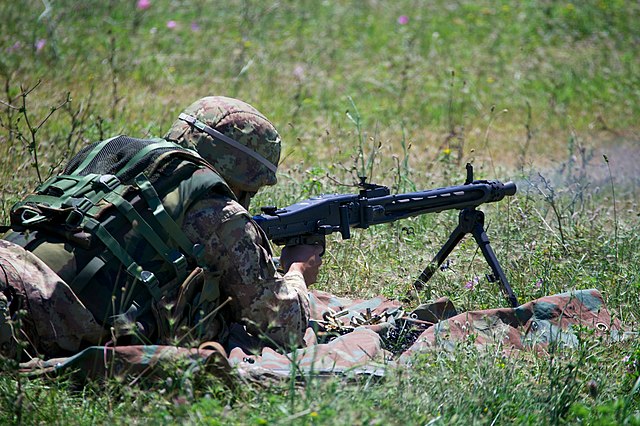The MG 34 is a German recoil-operated air-cooled general-purpose machine gun, first tested in 1929, introduced in 1934, and issued to units in 1936. It introduced an entirely new concept in automatic firepower – the Einheitsmaschinengewehr – and is generally considered the world's first general-purpose machine gun (GPMG). Both the MG 34 and MG 42 were erroneously nicknamed "Spandau" by Allied troops, a carryover from the World War I nickname for the MG 08, which was produced at the Spandau Arsenal.
MG 34 with inserted Gurt 34 reusable non-disintegrating metal ammunition belt
German soldiers with an MG 34 using a 50-round Gurttrommel
A Wehrmacht infantry squad with the MG 34 in the light machine gun role
Machine gun team with MG34 at the Eastern Front
General-purpose machine gun
A general-purpose machine gun (GPMG) is an air-cooled, usually belt-fed machine gun that can be adapted flexibly to various tactical roles for light and medium machine guns. A GPMG typically features a quick-change barrel design calibered for various fully powered cartridges such as the 7.62×51mm NATO, 7.62×54mmR, 7.5×54mm French, 7.5×55mm Swiss and 7.92×57mm Mauser, and be configured for mounting to different stabilizing platforms from bipods and tripods to vehicles, aircraft, boats and fortifications, usually as an infantry support weapon or squad automatic weapon.
The MG-42 type general-purpose machine guns in both bipod and tripod configurations. The tall tripod on the right is for anti-aircraft use.
MG 34 belt-fed tripod version (top) and saddle-drum magazine bipod version (below)
MG 42/59
MG3








